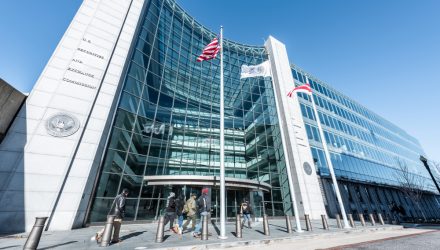By Townsend Lansing, Head of Product at CoinShares
I have long had a personal interest in the Security Exchange Commission’s (SEC’s) approach towards digital currency exchange traded products (ETPs). In 2018, I wrote some blogs that I summarized at the time with the following bullet points:
1) Unless the crypto-community can find a way to improve security and move liquidity onto regulated exchanges, it is unlikely we will see the SEC approve any of the filings in the near to medium term;
2) A combination of self-regulation with the transfer of liquidity to regulated exchanges, could lead to the crypto-currency community seeing regulatory and institutional money concerns fade.
And now, having joined CoinShares as Head of Product and with the number of Bitcoin ETF rejections in the US reaching double digits with yet another refusal order issued in response to Wilshire Phoenix last Friday ( here ), I thought it would be worth revisiting.
Unfortunately, not that much has changed.
The SEC continued its refusal streak with a very vocal emphasis on two main points:
1) Applicants simply have to stop trying to convince the Commission that the BTC market is “inherently resistant to manipulation”; and
2) It is an absolute requirement for the exchange listing the ETP to have a “comprehensive surveillance sharing agreement with a regulated market of significant size.” Exactly what that means isn’t particularly clear, with the SEC effectively saying: we’ll know it when we see it.
On Digital Currency Markets and Resistance to Manipulation
Wilshire Phoenix wasn’t the first to advance this argument, and they probably won’t be the last. Whatever the merits of the argument may be, it is abundantly clear that as long as a significant portion of Bitcoin trading takes place on unregulated markets and there remains a large concentration in the hands of a small number of holders, the SEC isn’t buying it. The Commission presents a laundry list of concerns, ranging from the 51% problem, to significant holdings among BTC’s early adopters, to “wash” trading, hacking, and Tether. They even throw in a reference to the ancient (for BTC purposes) Mt. Gox fraud. Personally, I read this as a pretty clear rebuttal of the assertion (and potentially a warning to future applicants: don’t bother with this line of reasoning).
A “Comprehensive Surveillance Sharing Agreement with a Regulated Market of Significant Size”
Whilst the “surveillance sharing agreement” side of this equation is fairly easy, what constitutes “a regulated market of significant size” is still very much up for debate.
According to the SEC, (i) a market must be significant enough that anyone attempting to manipulate the price of the ETP would have to trade on that market to do so and (ii) trading in the ETP would not represent the predominant influence on prices in that market.
Sounds interesting enough in theory, right? But what that means in practice is anybody’s guess. Indeed, the SEC has defined it by example of what it isn’t:
- It isn’t the CME bitcoin futures market;
- It isn’t the CME bitcoin futures market with data sharing arrangements from BTC exchanges that have strong reputations;
- It isn’t the CME bitcoin futures market with data sharing arrangements from BTC exchanges that have strong reputations supported by an index from an EU-regulated benchmark provider.
Essentially, it isn’t anything the applicant structured in response to previous SEC refusal orders with the hope of getting clearance. Furthermore and more importantly, it isn’t anything (as Commissioner Peirce’s dissent ( here ) makes quite clear) that can be determined with clear quantitative and qualitative guidelines or by reference to precedent ETPs that have been approved.
I like Commissioner Peirce’s dissent. She makes some strong statutory arguments about the limits of SEC discretion under the Securities Exchange Act of 1934, points out the lack of clear precedent in the SEC’s current rationale and emphasizes the need for the SEC (and indeed, all regulators) to encourage and promote innovation.
As a small aside, I was involved in launching the ETFS Platinum and Palladium Trusts – the precedent cited by Commissioner Peirce – and can state that we had very few concerns about satisfying the Commission of the existence of a “regulated market of significant size”; we did, however, spend time and effort addressing concerns that “trading in the ETP would not represent the predominant influence on prices in the spot or futures market.”
Whether that lends credence to Commissioner Peirce’s claim that the Commission is applying a “unique, heightened standard”, I will leave for readers to decide. Personally, I remain convinced that the SEC takes no house view on the viability of the technology nor on its inherent value as an investment. In my opinion, they are standing by their relatively consistent message: “if the digital assets community wants to access money that operates within the regulated system, it needs to conform to a minimum set of regulations.”
Therefore, I read this lack of clarity (and their laundry list of concerns) as evidence the Commission still doesn’t trust digital currency markets.
So what can the digital asset community do to earn the SEC’s trust?
Well, besides transferring significant liquidity to a regulated exchange to satisfy SEC demands (which still seems some ways off), self-regulation is probably the way to proceed. It is (probably) no coincidence that the most recent refusal order mentions the importance of the obligations imposed on self-regulated organizations (so-called SRO’s) at least 12 times and explicitly notes that BTC exchanges are not, nor do they subscribe to the authority of, any such self-regulated organization. A digital currency SRO, capable of setting and enforcing minimum standards for exchanges, will not only improve interaction with the SEC (and presumably other global regulators), it will allow market forces to drive both regulatory and technical innovation.
